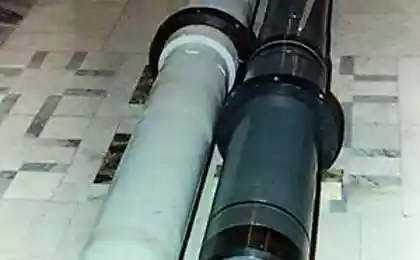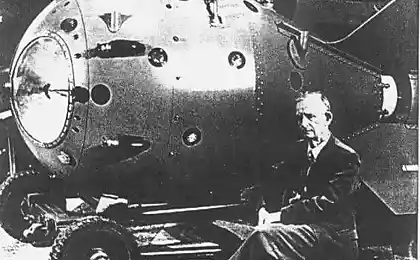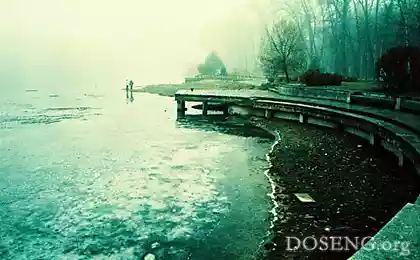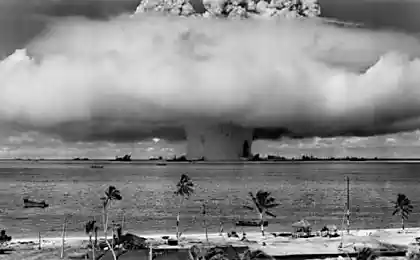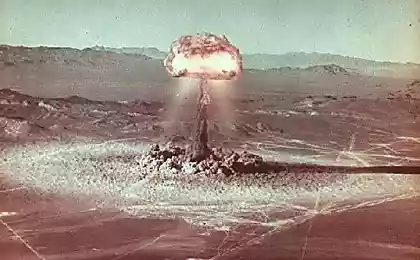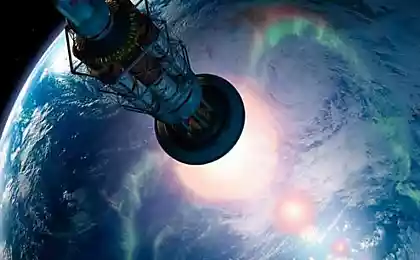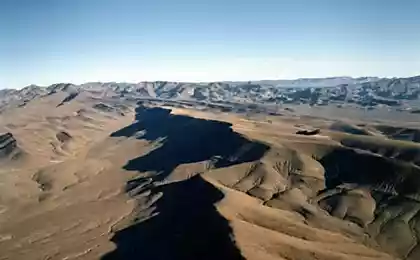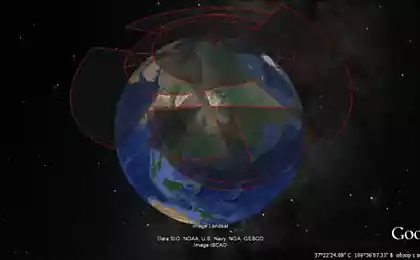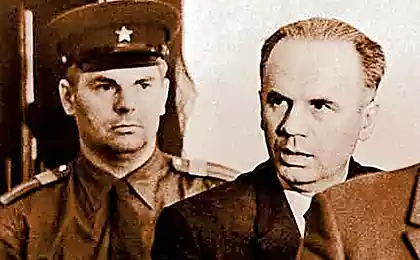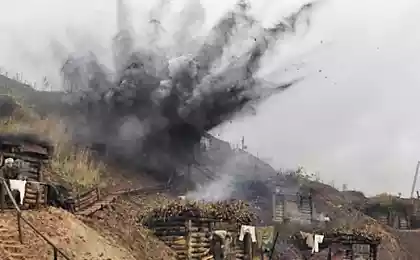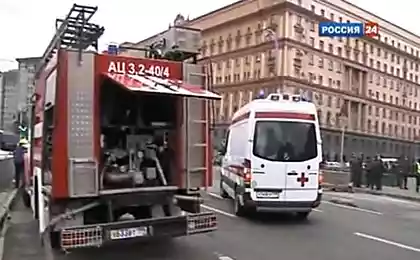1919
Photos of nuclear explosions
Nuclear explosions - a powerful weapon designed to destroy large surface and protected underground military facilities, clusters of enemy troops and equipment (primarily tactical nuclear weapons), and the complete suppression and destruction of the opposing side: the destruction of large and small settlements with the civilian population and strategic industry.
General Thomas Farrell: "The effect on me burst, can be called magnificent, marvelous, and at the same time terrifying. Mankind has never created such an incredible phenomenon and awesome power ».
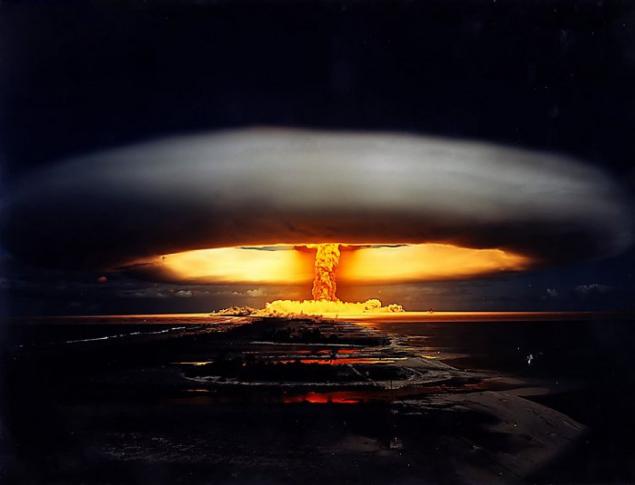
A brilliant physicist Robert Oppenheimer, also known as "father of the atomic bomb", was born in New York in 1903 in a family of wealthy and educated Jews. During the Second World War, he led the development of the American nuclear scientists to create the first in the history of the atomic bomb.

Name of Test: Trinity (Trinity)
Date: July 16, 1945
Location: landfill in Alamogordo, New Mexico.
It was a test of the world's first atomic bomb. On a site with a diameter of 1.6 kilometers into the sky shot up a giant purple-green-orange fireball. The earth shook from the explosion rose to the sky white column of smoke and gradually began to expand, taking on an altitude of about 11 kilometers of awesome mushroom shape. The first nuclear explosion struck military and scientific. Robert Oppenheimer was reminded of a line from the Indian epic poem "Bhagavad Gita": "I am become Death, the destroyer of worlds." (Photo Wikicommons)
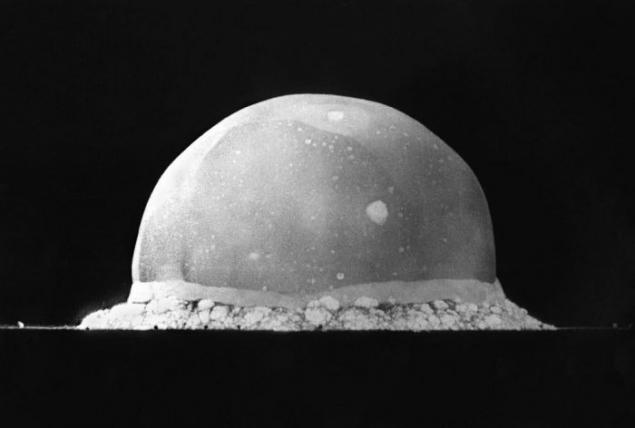
Name of Test: Baker
Date: July 24, 1946
Location: Laguna Bikini Atoll
And Type: Underwater, the depth of 27.5 meters
Power: 23 kilotons.
The purpose of the tests was to study the effects of nuclear weapons on naval ships and their personnel. 71 the ship was converted into a floating target. This was the 5th nuclear test.
The bomb was placed in a waterproof case and lowered into the water from the ship LSM-60. 8 ships were sunk targets, among them: ships LSM-60, Saratoga, Nagato, Arkansas, submarines Pilotfish, Apogon, dry dock ARDC-13 barge YO-160. Another eight ships appeared badly damaged. The explosion lifted into the air a few million tons of water. (Photo: US Navy)

Name of Test: Castle Bravo
Date: March 1, 1954
Location: Bikini Atoll
Type of explosion on the surface of
Power: 15 megatons.
The explosion of the hydrogen bomb. Castle Bravo was the most powerful explosion of all test ever conducted by the United States. The power of the explosion was much more than the initial forecasts of 4-6 megatons. The crater from the explosion turned 2 km in diameter and a depth of 75 m. In 1 minute mushroom cloud reached a height of 15 km. After 8 minutes after the blast fungus reached its maximum size in 20 km in diameter. Castle Bravo test in the US caused the largest radioactive contamination of areas and exposure of local residents. (Photo Wikicommons)
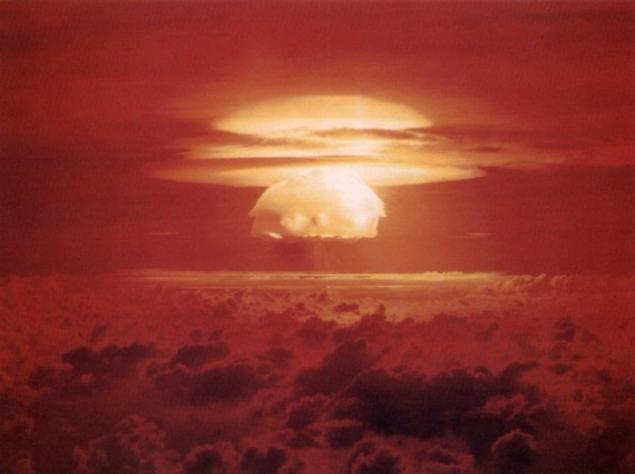
Name of Test: Castle Romeo
Date: March 26, 1954
Location: on a barge in the crater Bravo, Bikini Atoll
Type of explosion on the surface of
Power: 11 megatons.
The power of the explosion was in 3 times more than the initial forecasts. Romeo was the first test, conducted on a barge. The fact that such nuclear explosion left a large crater in the atoll, and the test program would destroy all the islands. (Photo: US National Nuclear Security Administration | Department of Energy)

Name of Test: AZTEC
Date: April 27, 1962
Location: Christmas Island
Power: 410 kilotons.
Part of the project Dominique - a series of nuclear weapons tests, consisting of 105 explosions. These tests were conducted from 1962 to 1963 in the United States.
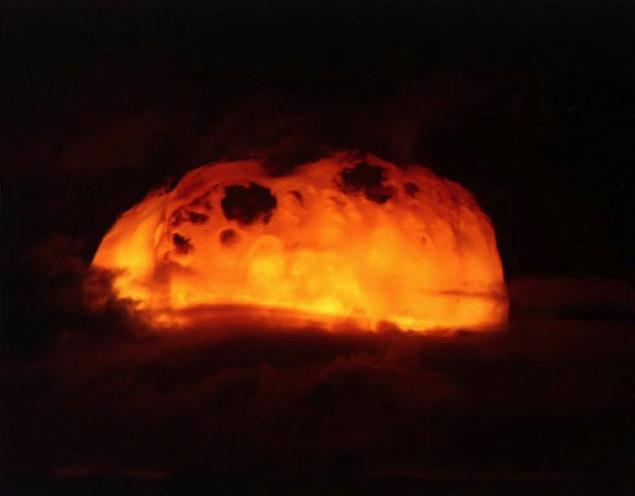
Test range in Nevada on Jan. 27, 1951 (Able explosion in Operation Ranger). (Photo: National Nuclear Security Administration)
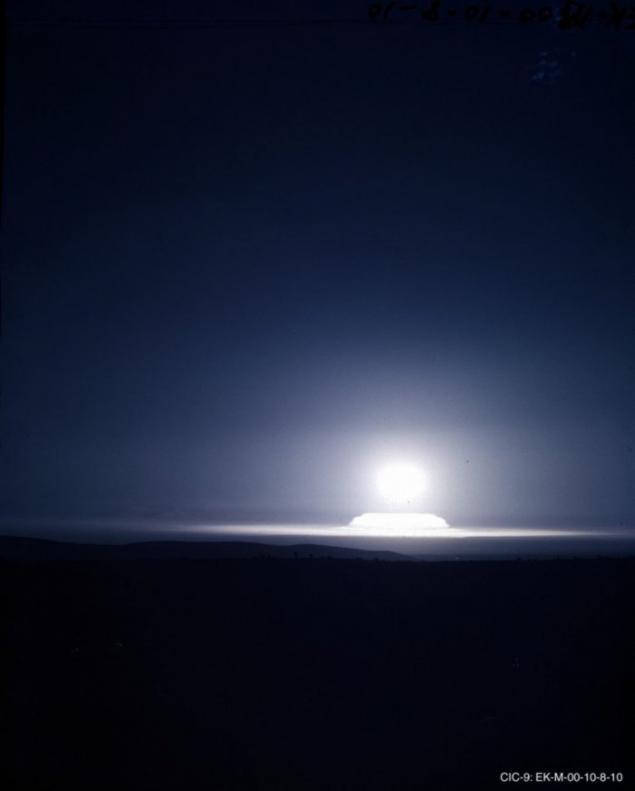
Name of Test: Chama
Date: October 18, 1962
Location: Johnston Island
Power: 1.59 megatons
Part of the project Dominique - a series of nuclear weapons tests, consisting of 105 explosions.
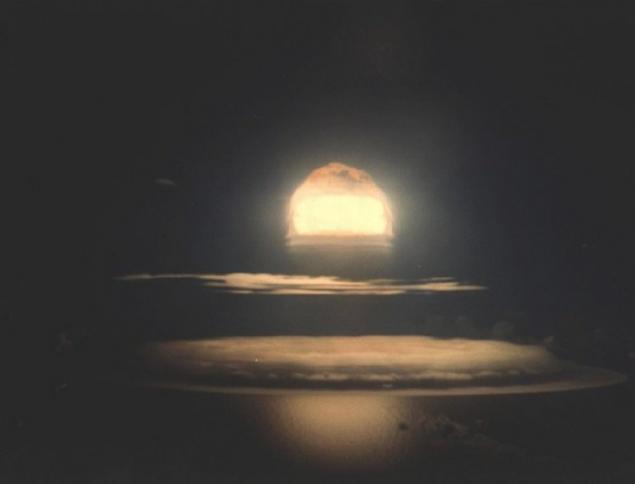
Name of Test: Truckee
Date: June 9, 1962
Location: Christmas Island
Capacity: more than 210 kilotons
Part of the project Dominique - a series of nuclear weapons tests, consisting of 105 explosions.
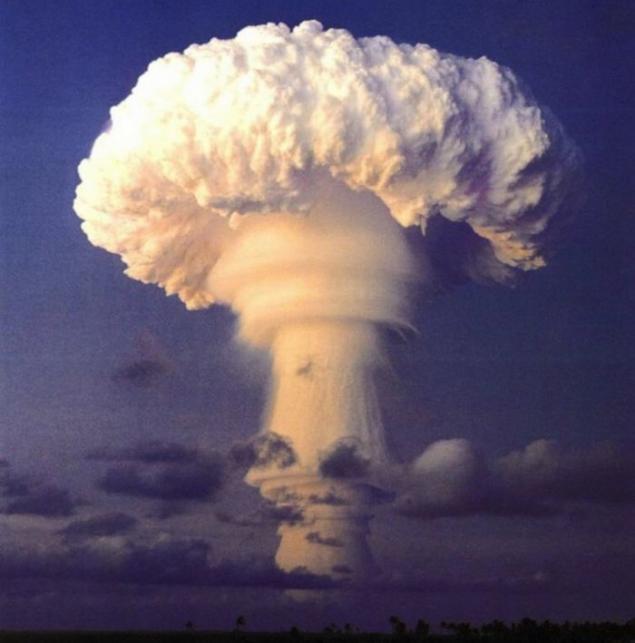
Name of Test: Dog
Date: 1951
Location: Nevada nuclear test site
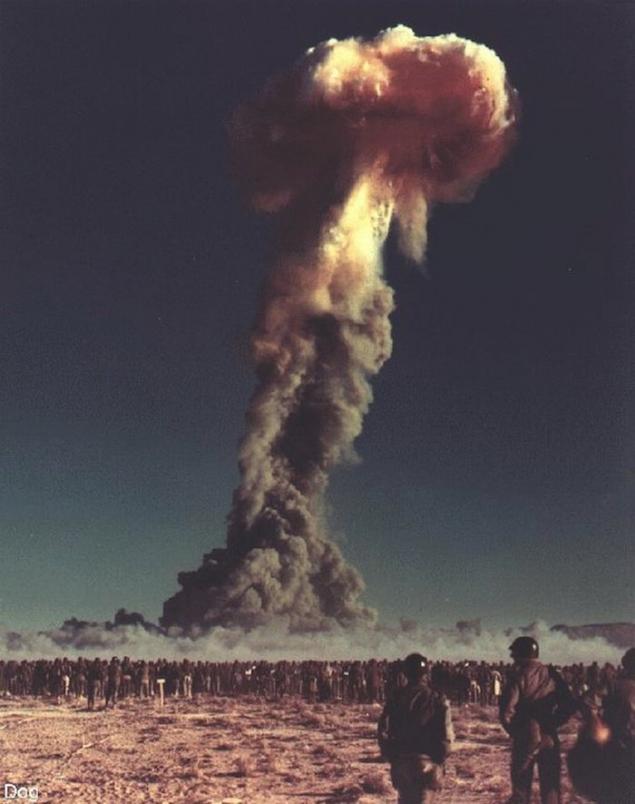
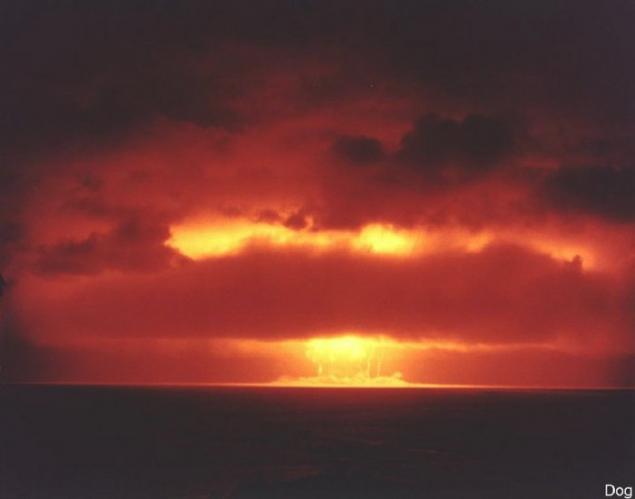
Name of Test: Fizeau
Date: September 14, 1957
Power: more than 11 kilotons
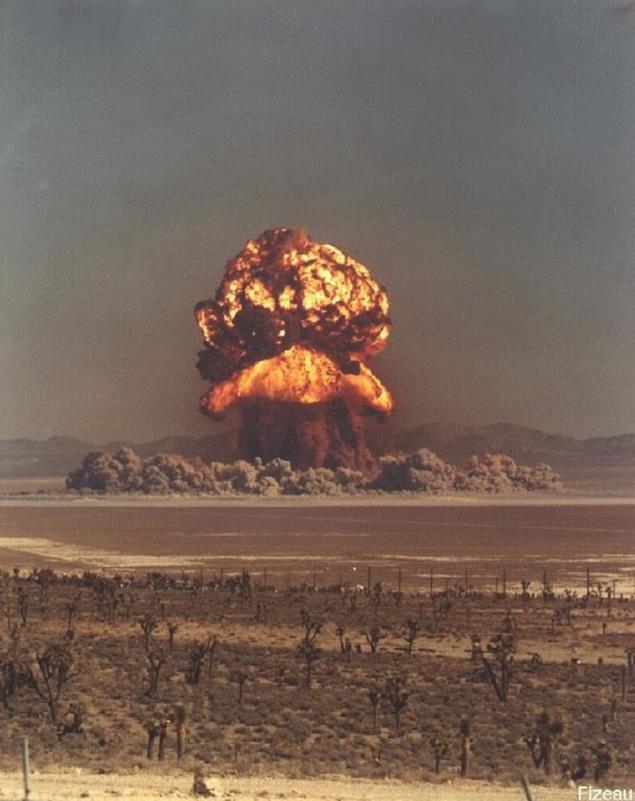
Name of Test: Annie
Date: March 17, 1953
Location: Nevada nuclear test site
Power: 16 kilotons
As part of "Operation Apshot-Nothol" - a series of 11 nuclear tests carried out by the United States in 1953. (Photo Wikicommons)
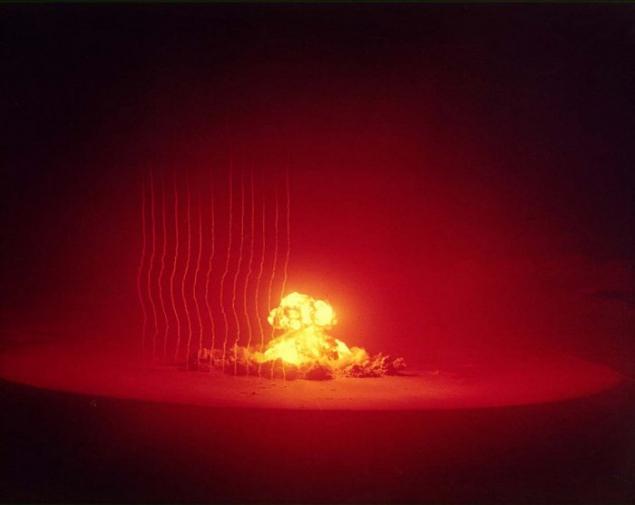
The name of the test: "Unicorn" (fr. Licorne)
Date: July 3, 1970
Location: Atoll in French Polynesia
Power: 914 kilotons
Largest thermonuclear explosion in France. (Photo by Pierre J. | French Army)
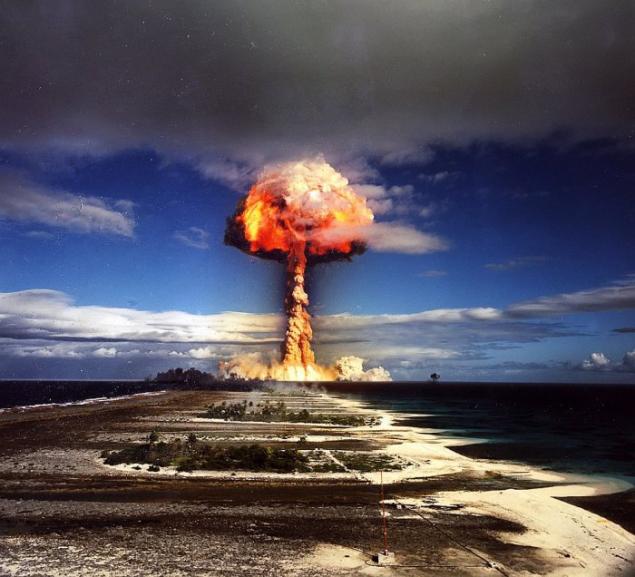
"Unicorn". (Photo by Pierre J. | French Army)
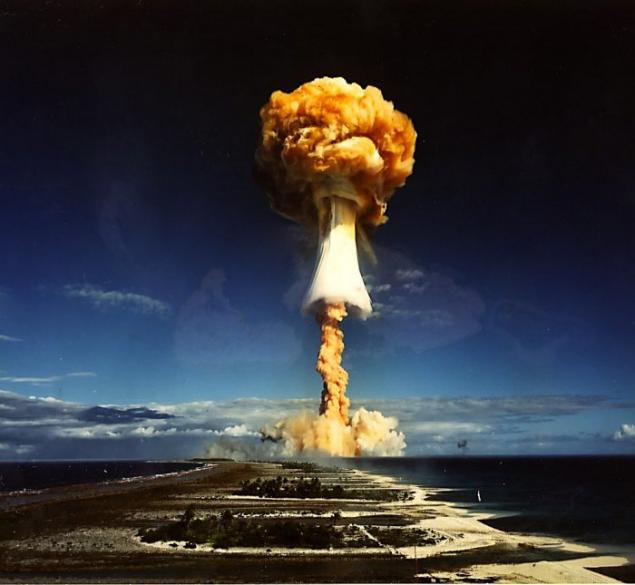
"Unicorn". (Photo by Pierre J. | French Army)
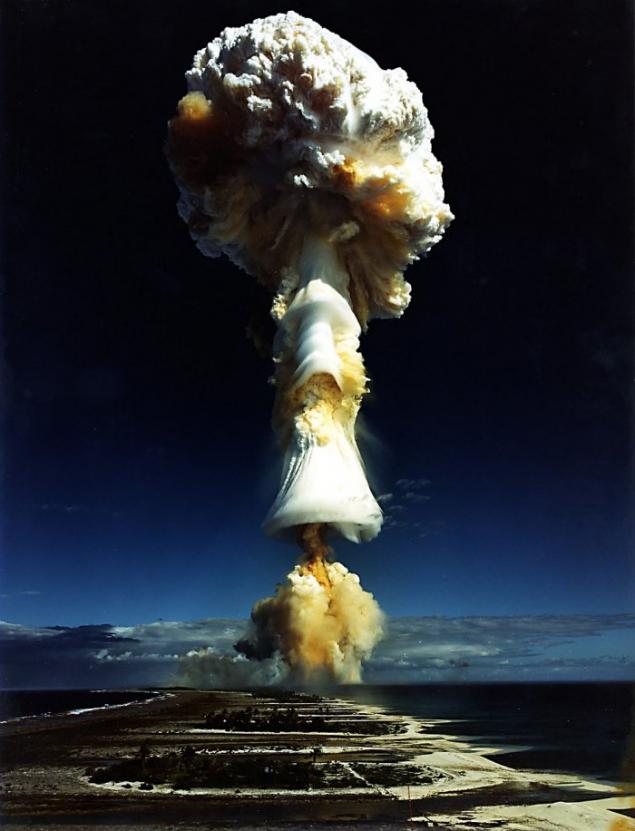
"Unicorn". (Photo by Pierre J. | French Army)
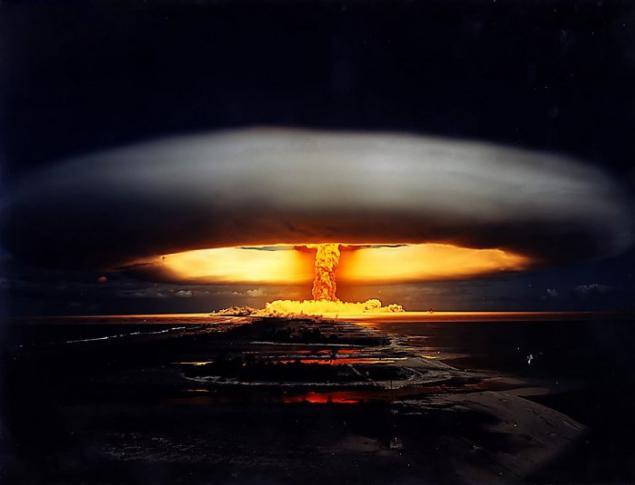
Name of Test: Oak
Date: June 28, 1958
Location: Laguna Eniwetok in the Pacific
Power: 8.9 megatons

Name of Test: Mike
Date: 31 October 1952
Location: Island Elugelab («Flora»), the atoll Eneveyta
Power: 10.4 megatons
The device exploded when tested and Mike called "sausage", was one of this "hydrogen" bomb megaton class. Mushroom cloud reached a height of 41 km with a diameter of 96 km. Mike Power was greater than the power of all the bombs dropped in World War II. (Photo: National Nuclear Security Administration)
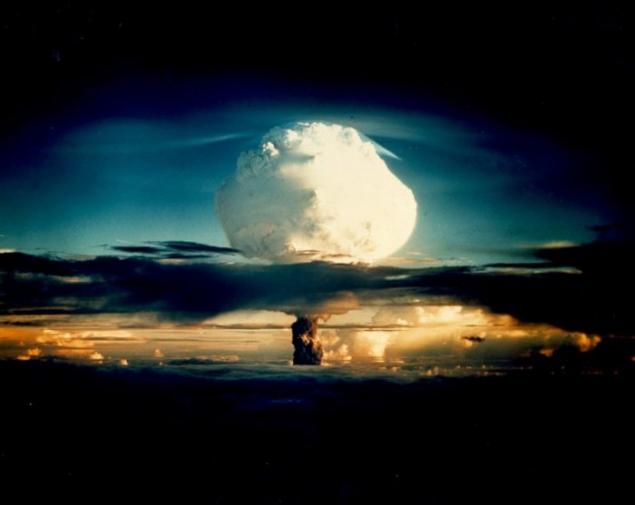
Name of Test: Grable
Date: May 25, 1953
Location: Nevada nuclear test site
Power: 15 kilotons
As part of "Operation Apshot-Nothol" - a series of 11 nuclear tests carried out by the United States in 1953.
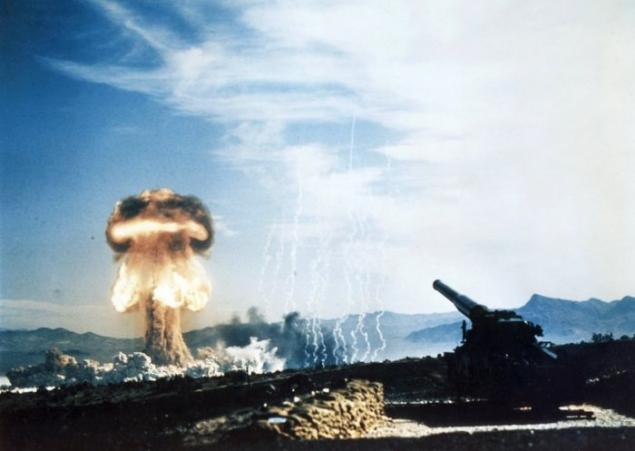
Name of Test: George
Date: 1951
Location: Nevada nuclear test site
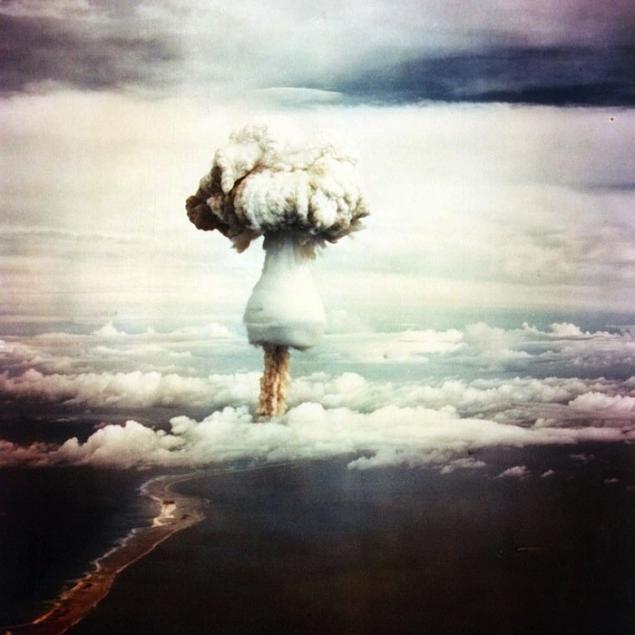
Name of Test: Priscilla
Date: 1957
Location: Nevada nuclear test site
Power: 37 kilotons
In a series of tests «Plumbbob» May - October 1957.
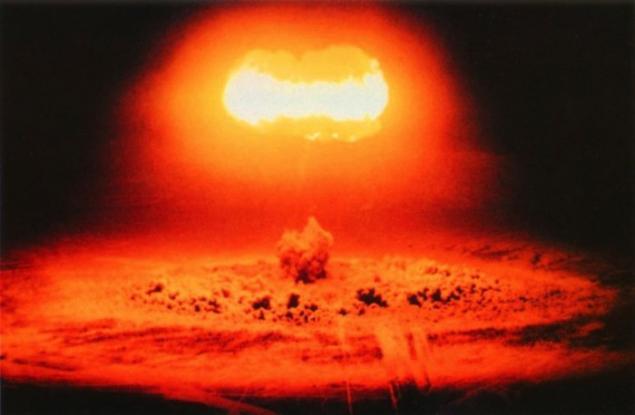
Another picture of a nuclear explosion Castle Romeo, which we wrote above
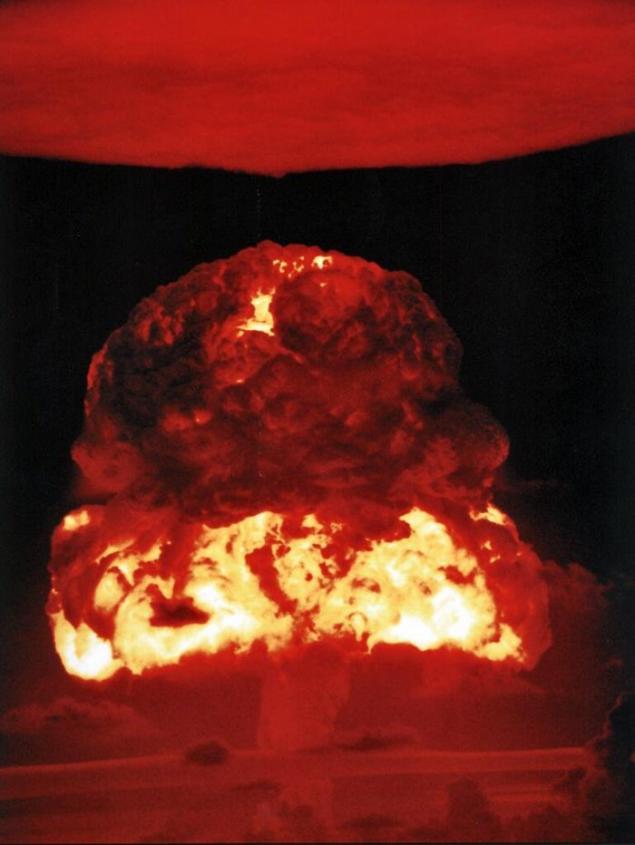
Copies of the first atomic bombs "Little Boy» (Little Boy) with a mass of 16 kilotons of charge and "Fat Man» (Fat Man) with a mass of 21 kiloton charge. It is the "Little Boy" was dropped on Hiroshima on August 6, 1945, and "Fat Man" on Nagasaki on Aug. 9, 1945
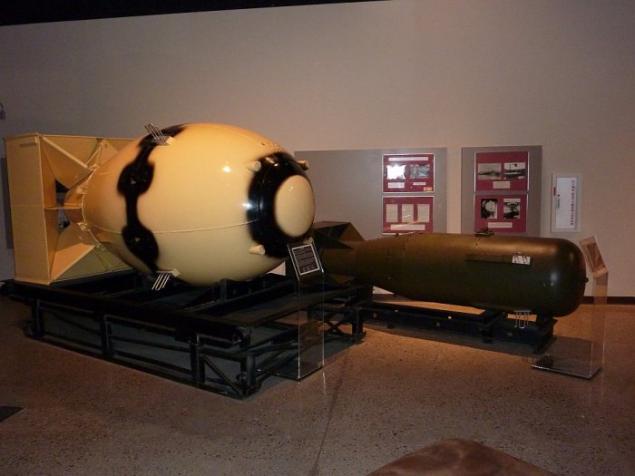
Name of Test: Umbrella
Date: June 8, 1958
Location: Laguna Eniwetok in the Pacific
Power: 8 kilotons
Underwater nuclear explosion was produced during the operation «Hardtack». The targets were decommissioned ships.

Umbrella
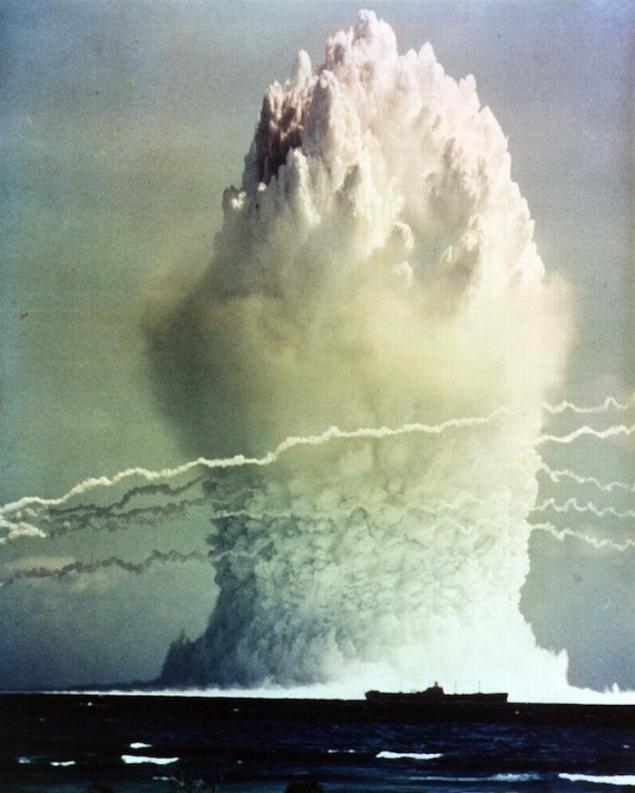
Name of Test: Seminole
Date: June 6, 1956
Location: Laguna Eniwetok in the Pacific
Power: 13.7 kilotons

Name of Test: YESO
Date: June 10, 1962
Location: Christmas Island
Power: 3 megatons

Name of Test: Rhéa
Date: June 14, 1971
Location: French Polynesia
Power: 1 megaton

Atomic bombing of Hiroshima (left, the atomic bomb "Little Boy" on August 6, 1945) and Nagasaki (right, the atomic bomb, "Fat Man" on August 9, 1945) - the only one in the history of mankind an example of the combat use of nuclear weapons. The total number of victims ranged from 90 to 166 thousand people in Hiroshima and 60 to 80 thousand people - in Nagasaki.
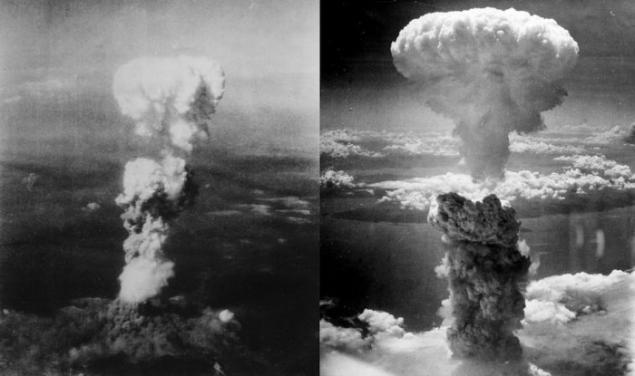
Name of Test: Annie
Date: March 17, 1953
Location: Nevada nuclear test site
Power: 16 kilotons
As part of "Operation Apshot-Nothol" - a series of 11 nuclear tests carried out by the United States in 1953. A series of images showing the destruction of the house, located 1 km from the explosion
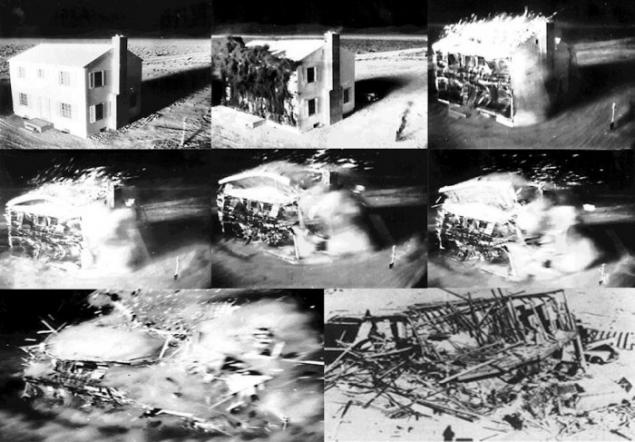
AN602 (aka "Tsar Bomba" and "gruel" - a thermonuclear bomb, developed in the USSR in 1954-1961 gg. A group of nuclear physicists headed by Academician Igor Kurchatov. The most powerful bomb in the history of mankind. As various sources had power from 57 to 58, 6 megatons
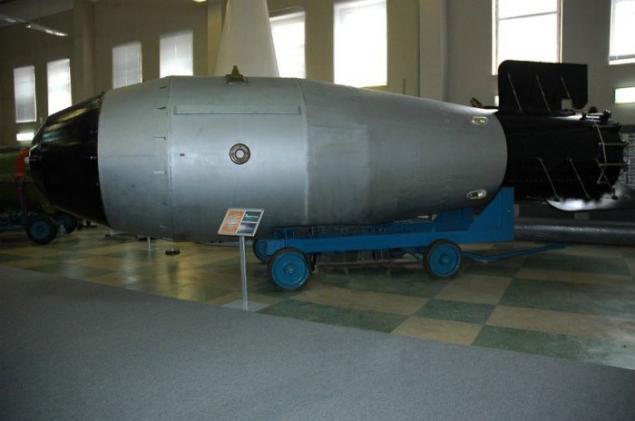
Name of Test: Tsar Bomb
Date: October 30, 1961
Location: Novaya Zemlya
Power: 50 megatons
(Photo Archive Minatom)

Place at the site in Alamogordo, New Mexico, where the July 16, 1945 was blown up the world's first atomic bomb Trinity (Trinity)
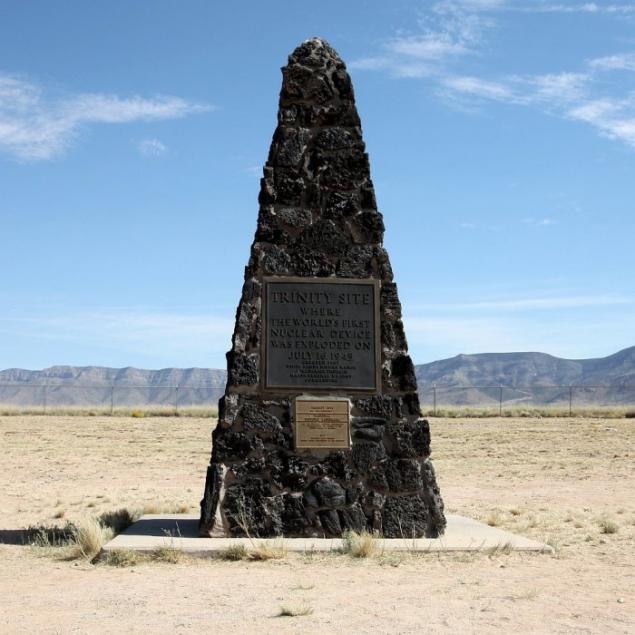
General Thomas Farrell: "The effect on me burst, can be called magnificent, marvelous, and at the same time terrifying. Mankind has never created such an incredible phenomenon and awesome power ».

A brilliant physicist Robert Oppenheimer, also known as "father of the atomic bomb", was born in New York in 1903 in a family of wealthy and educated Jews. During the Second World War, he led the development of the American nuclear scientists to create the first in the history of the atomic bomb.

Name of Test: Trinity (Trinity)
Date: July 16, 1945
Location: landfill in Alamogordo, New Mexico.
It was a test of the world's first atomic bomb. On a site with a diameter of 1.6 kilometers into the sky shot up a giant purple-green-orange fireball. The earth shook from the explosion rose to the sky white column of smoke and gradually began to expand, taking on an altitude of about 11 kilometers of awesome mushroom shape. The first nuclear explosion struck military and scientific. Robert Oppenheimer was reminded of a line from the Indian epic poem "Bhagavad Gita": "I am become Death, the destroyer of worlds." (Photo Wikicommons)

Name of Test: Baker
Date: July 24, 1946
Location: Laguna Bikini Atoll
And Type: Underwater, the depth of 27.5 meters
Power: 23 kilotons.
The purpose of the tests was to study the effects of nuclear weapons on naval ships and their personnel. 71 the ship was converted into a floating target. This was the 5th nuclear test.
The bomb was placed in a waterproof case and lowered into the water from the ship LSM-60. 8 ships were sunk targets, among them: ships LSM-60, Saratoga, Nagato, Arkansas, submarines Pilotfish, Apogon, dry dock ARDC-13 barge YO-160. Another eight ships appeared badly damaged. The explosion lifted into the air a few million tons of water. (Photo: US Navy)

Name of Test: Castle Bravo
Date: March 1, 1954
Location: Bikini Atoll
Type of explosion on the surface of
Power: 15 megatons.
The explosion of the hydrogen bomb. Castle Bravo was the most powerful explosion of all test ever conducted by the United States. The power of the explosion was much more than the initial forecasts of 4-6 megatons. The crater from the explosion turned 2 km in diameter and a depth of 75 m. In 1 minute mushroom cloud reached a height of 15 km. After 8 minutes after the blast fungus reached its maximum size in 20 km in diameter. Castle Bravo test in the US caused the largest radioactive contamination of areas and exposure of local residents. (Photo Wikicommons)

Name of Test: Castle Romeo
Date: March 26, 1954
Location: on a barge in the crater Bravo, Bikini Atoll
Type of explosion on the surface of
Power: 11 megatons.
The power of the explosion was in 3 times more than the initial forecasts. Romeo was the first test, conducted on a barge. The fact that such nuclear explosion left a large crater in the atoll, and the test program would destroy all the islands. (Photo: US National Nuclear Security Administration | Department of Energy)

Name of Test: AZTEC
Date: April 27, 1962
Location: Christmas Island
Power: 410 kilotons.
Part of the project Dominique - a series of nuclear weapons tests, consisting of 105 explosions. These tests were conducted from 1962 to 1963 in the United States.

Test range in Nevada on Jan. 27, 1951 (Able explosion in Operation Ranger). (Photo: National Nuclear Security Administration)

Name of Test: Chama
Date: October 18, 1962
Location: Johnston Island
Power: 1.59 megatons
Part of the project Dominique - a series of nuclear weapons tests, consisting of 105 explosions.

Name of Test: Truckee
Date: June 9, 1962
Location: Christmas Island
Capacity: more than 210 kilotons
Part of the project Dominique - a series of nuclear weapons tests, consisting of 105 explosions.

Name of Test: Dog
Date: 1951
Location: Nevada nuclear test site


Name of Test: Fizeau
Date: September 14, 1957
Power: more than 11 kilotons

Name of Test: Annie
Date: March 17, 1953
Location: Nevada nuclear test site
Power: 16 kilotons
As part of "Operation Apshot-Nothol" - a series of 11 nuclear tests carried out by the United States in 1953. (Photo Wikicommons)

The name of the test: "Unicorn" (fr. Licorne)
Date: July 3, 1970
Location: Atoll in French Polynesia
Power: 914 kilotons
Largest thermonuclear explosion in France. (Photo by Pierre J. | French Army)

"Unicorn". (Photo by Pierre J. | French Army)

"Unicorn". (Photo by Pierre J. | French Army)

"Unicorn". (Photo by Pierre J. | French Army)

Name of Test: Oak
Date: June 28, 1958
Location: Laguna Eniwetok in the Pacific
Power: 8.9 megatons

Name of Test: Mike
Date: 31 October 1952
Location: Island Elugelab («Flora»), the atoll Eneveyta
Power: 10.4 megatons
The device exploded when tested and Mike called "sausage", was one of this "hydrogen" bomb megaton class. Mushroom cloud reached a height of 41 km with a diameter of 96 km. Mike Power was greater than the power of all the bombs dropped in World War II. (Photo: National Nuclear Security Administration)

Name of Test: Grable
Date: May 25, 1953
Location: Nevada nuclear test site
Power: 15 kilotons
As part of "Operation Apshot-Nothol" - a series of 11 nuclear tests carried out by the United States in 1953.

Name of Test: George
Date: 1951
Location: Nevada nuclear test site

Name of Test: Priscilla
Date: 1957
Location: Nevada nuclear test site
Power: 37 kilotons
In a series of tests «Plumbbob» May - October 1957.

Another picture of a nuclear explosion Castle Romeo, which we wrote above

Copies of the first atomic bombs "Little Boy» (Little Boy) with a mass of 16 kilotons of charge and "Fat Man» (Fat Man) with a mass of 21 kiloton charge. It is the "Little Boy" was dropped on Hiroshima on August 6, 1945, and "Fat Man" on Nagasaki on Aug. 9, 1945

Name of Test: Umbrella
Date: June 8, 1958
Location: Laguna Eniwetok in the Pacific
Power: 8 kilotons
Underwater nuclear explosion was produced during the operation «Hardtack». The targets were decommissioned ships.

Umbrella

Name of Test: Seminole
Date: June 6, 1956
Location: Laguna Eniwetok in the Pacific
Power: 13.7 kilotons

Name of Test: YESO
Date: June 10, 1962
Location: Christmas Island
Power: 3 megatons

Name of Test: Rhéa
Date: June 14, 1971
Location: French Polynesia
Power: 1 megaton

Atomic bombing of Hiroshima (left, the atomic bomb "Little Boy" on August 6, 1945) and Nagasaki (right, the atomic bomb, "Fat Man" on August 9, 1945) - the only one in the history of mankind an example of the combat use of nuclear weapons. The total number of victims ranged from 90 to 166 thousand people in Hiroshima and 60 to 80 thousand people - in Nagasaki.

Name of Test: Annie
Date: March 17, 1953
Location: Nevada nuclear test site
Power: 16 kilotons
As part of "Operation Apshot-Nothol" - a series of 11 nuclear tests carried out by the United States in 1953. A series of images showing the destruction of the house, located 1 km from the explosion

AN602 (aka "Tsar Bomba" and "gruel" - a thermonuclear bomb, developed in the USSR in 1954-1961 gg. A group of nuclear physicists headed by Academician Igor Kurchatov. The most powerful bomb in the history of mankind. As various sources had power from 57 to 58, 6 megatons

Name of Test: Tsar Bomb
Date: October 30, 1961
Location: Novaya Zemlya
Power: 50 megatons
(Photo Archive Minatom)

Place at the site in Alamogordo, New Mexico, where the July 16, 1945 was blown up the world's first atomic bomb Trinity (Trinity)

